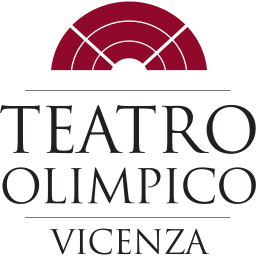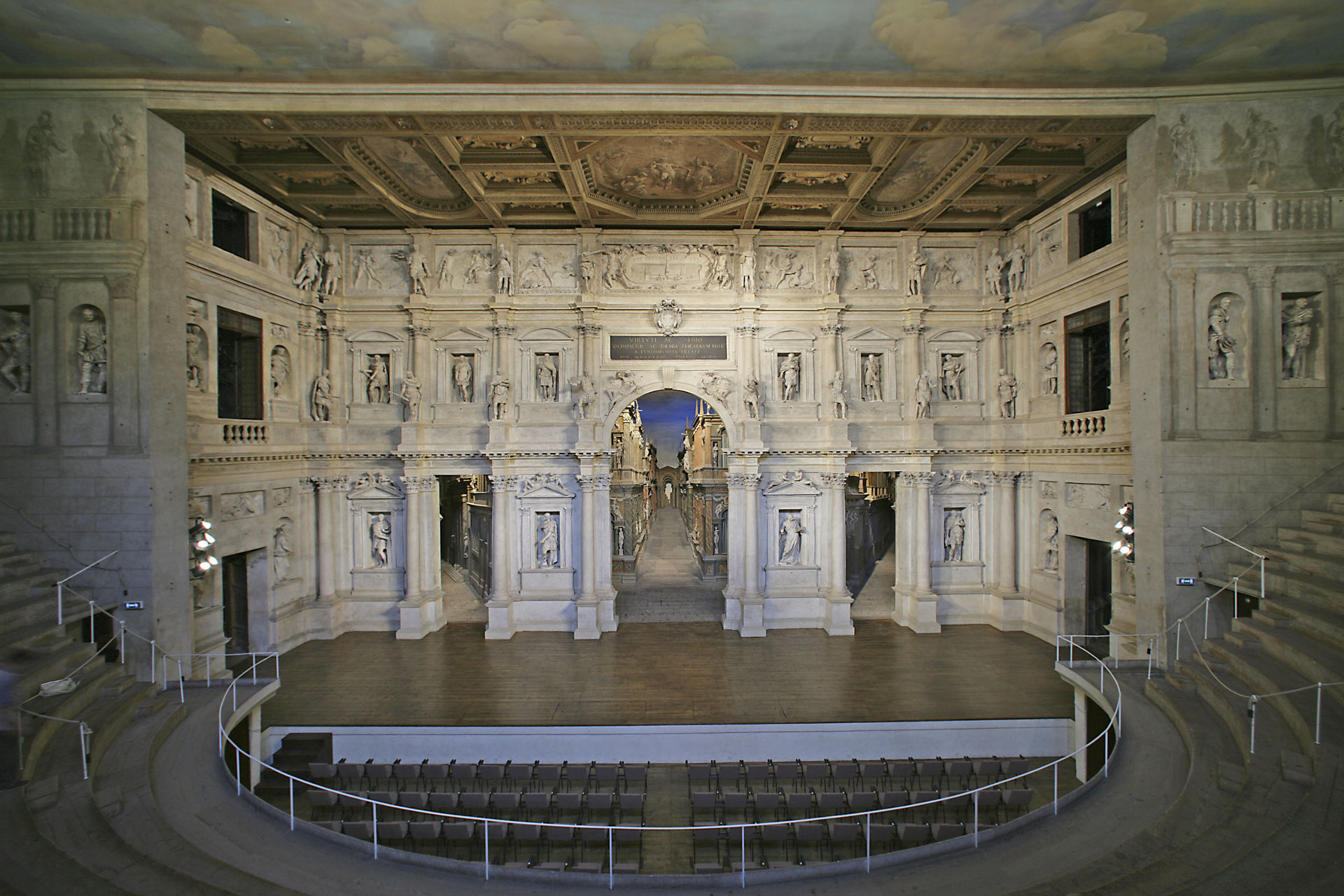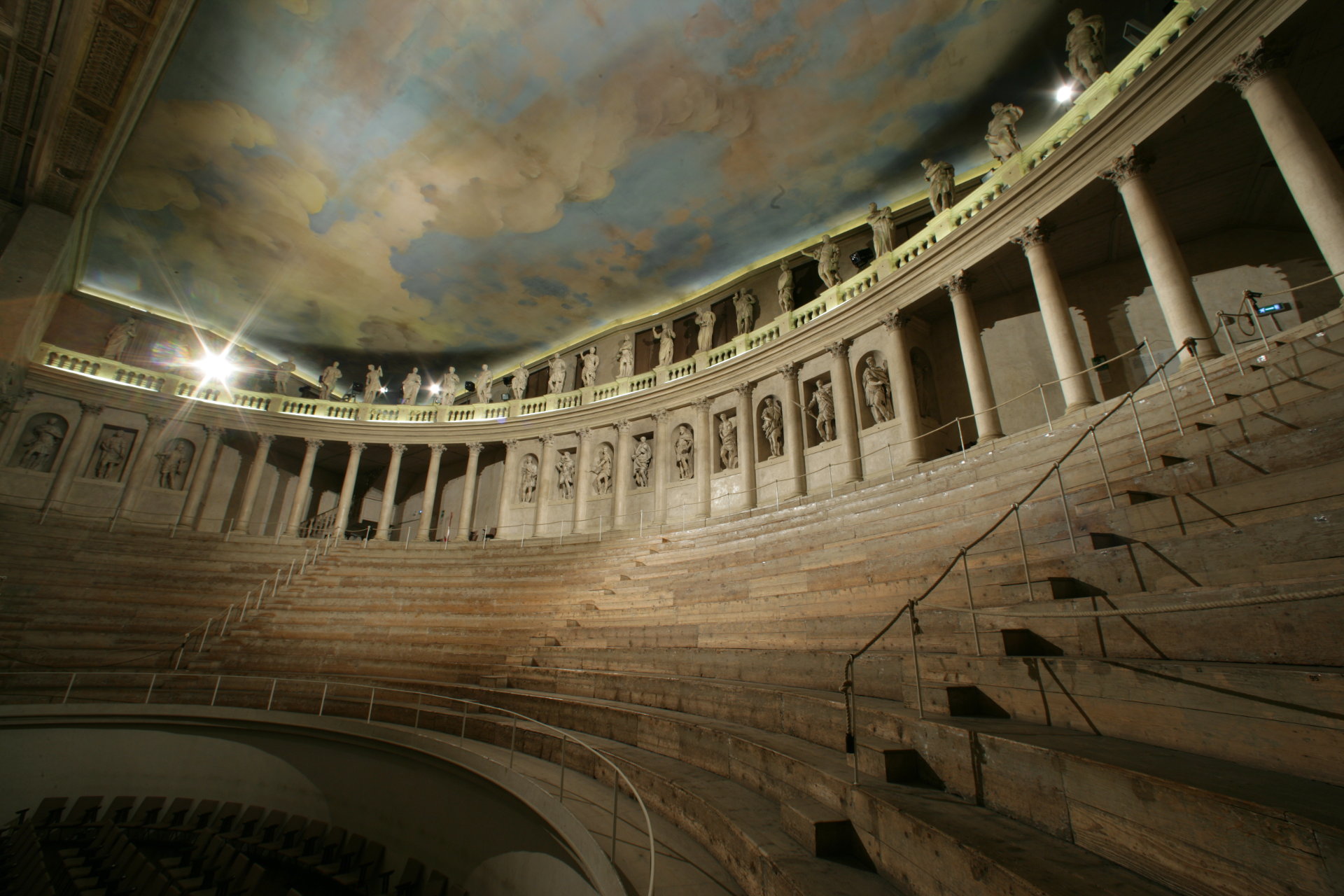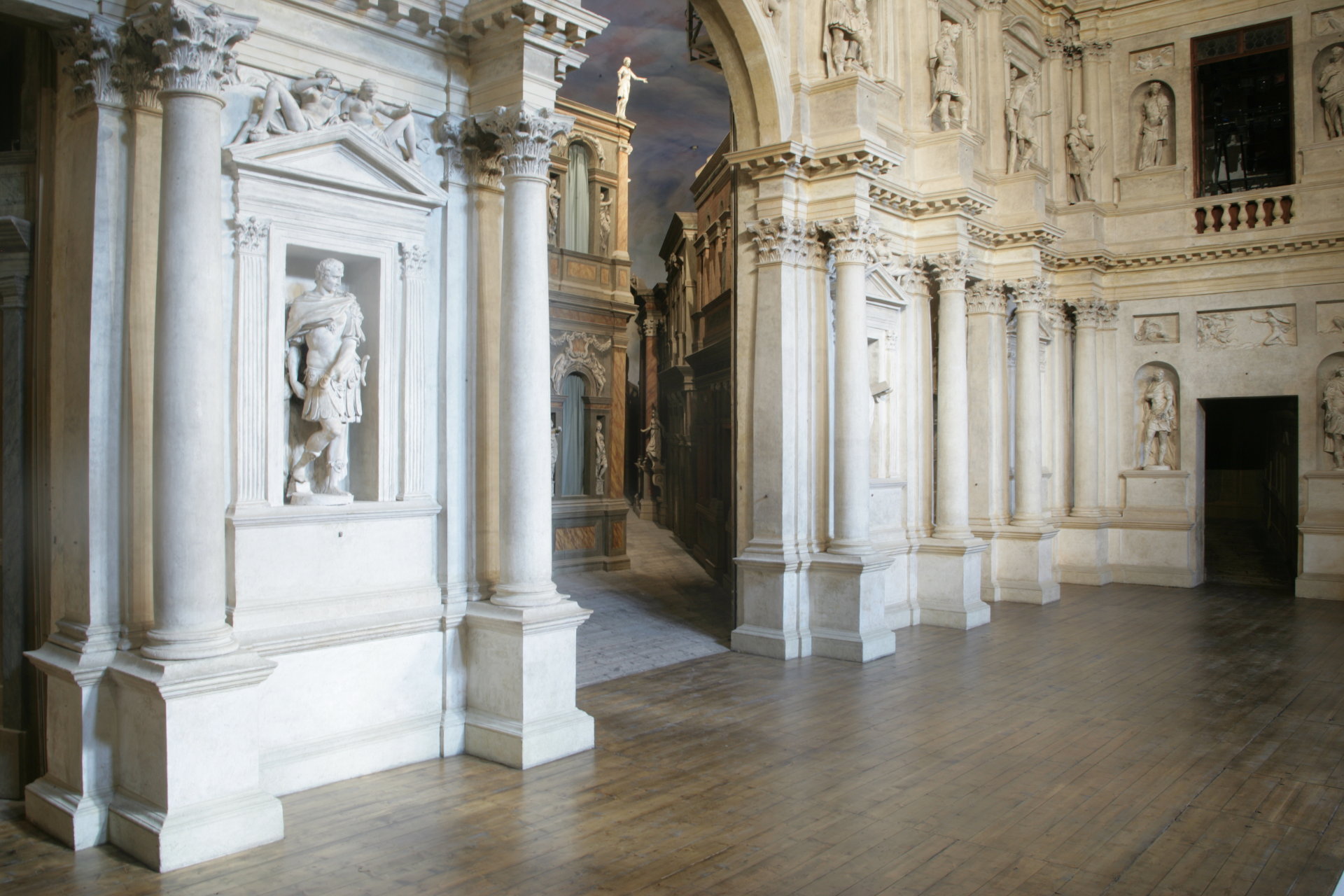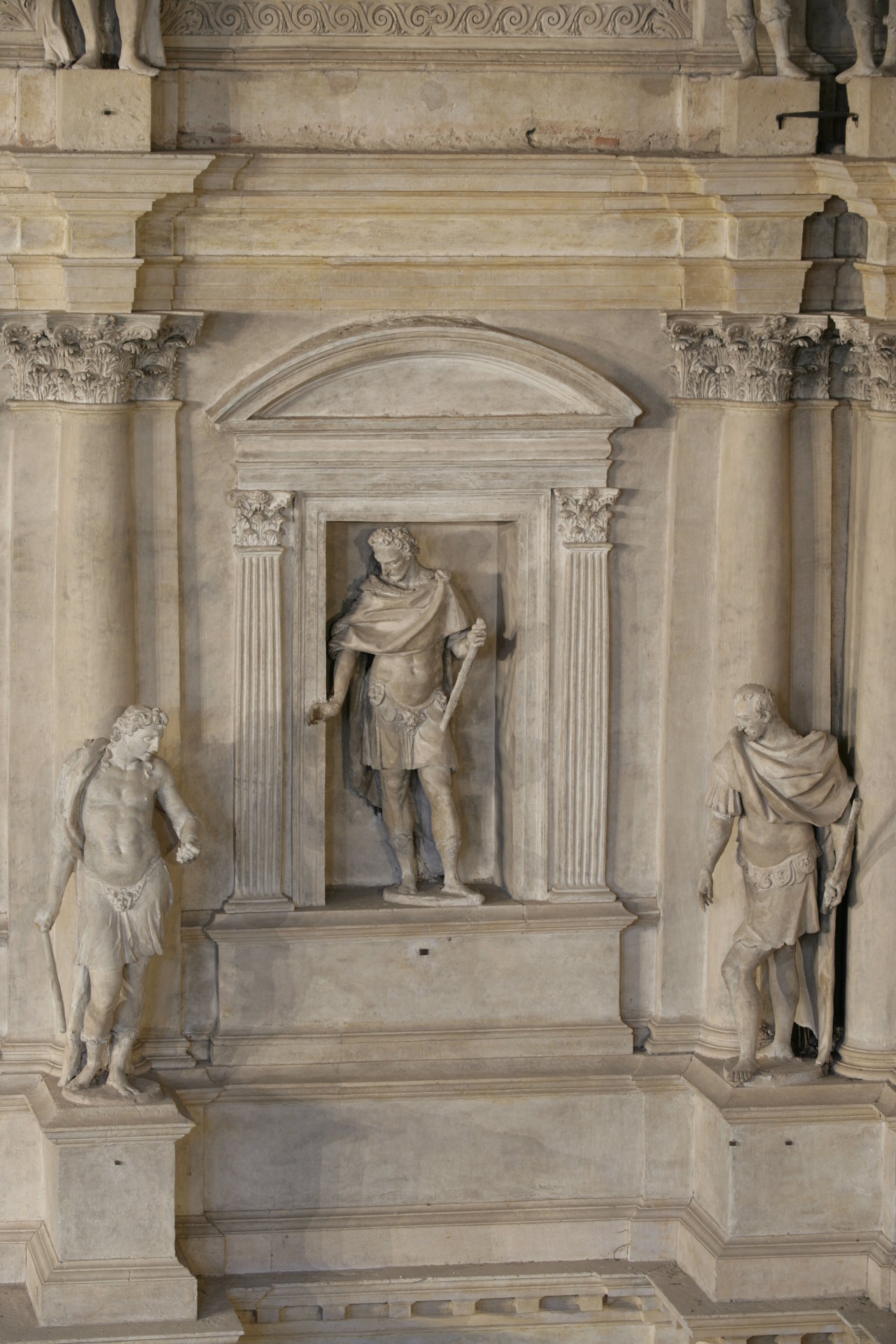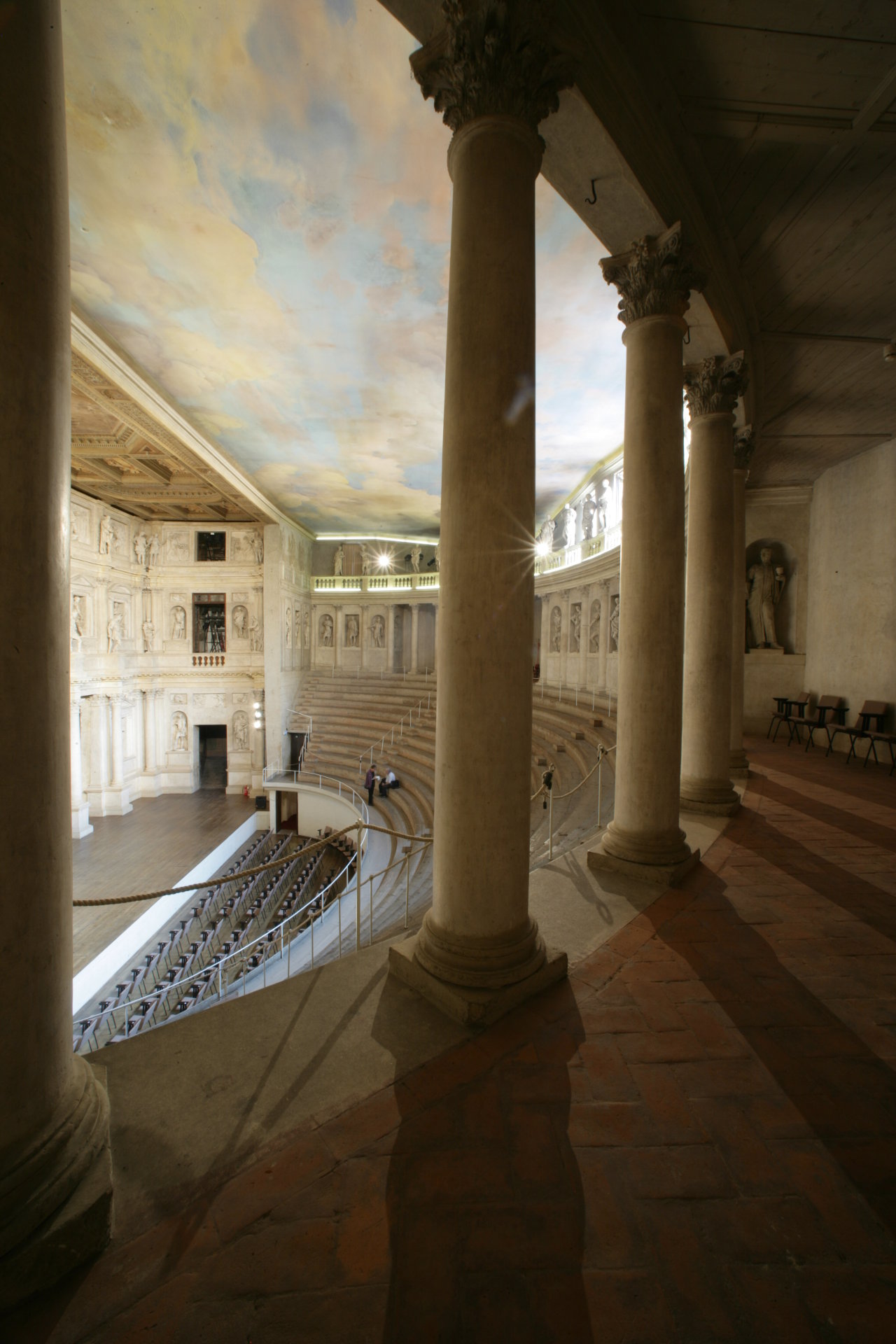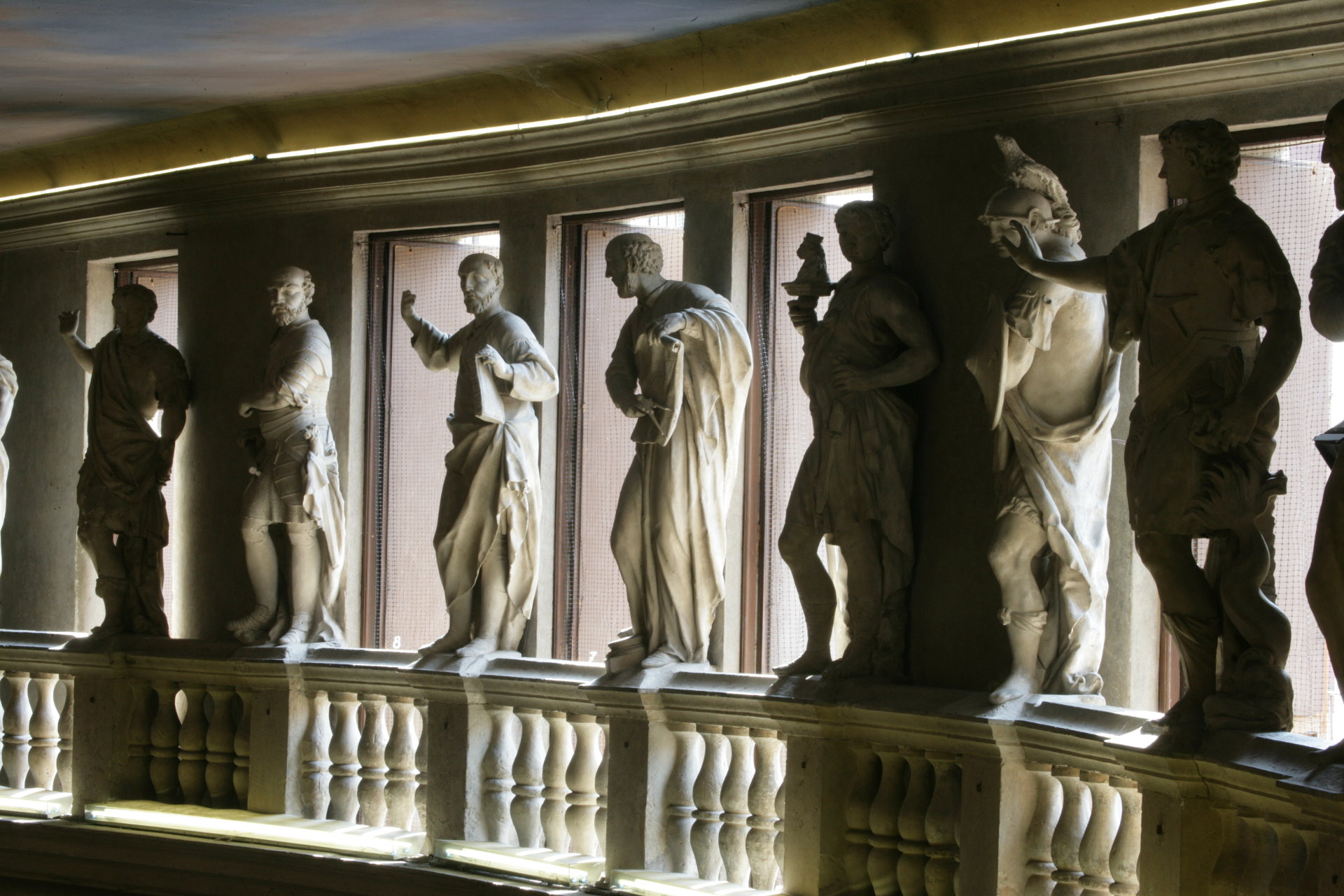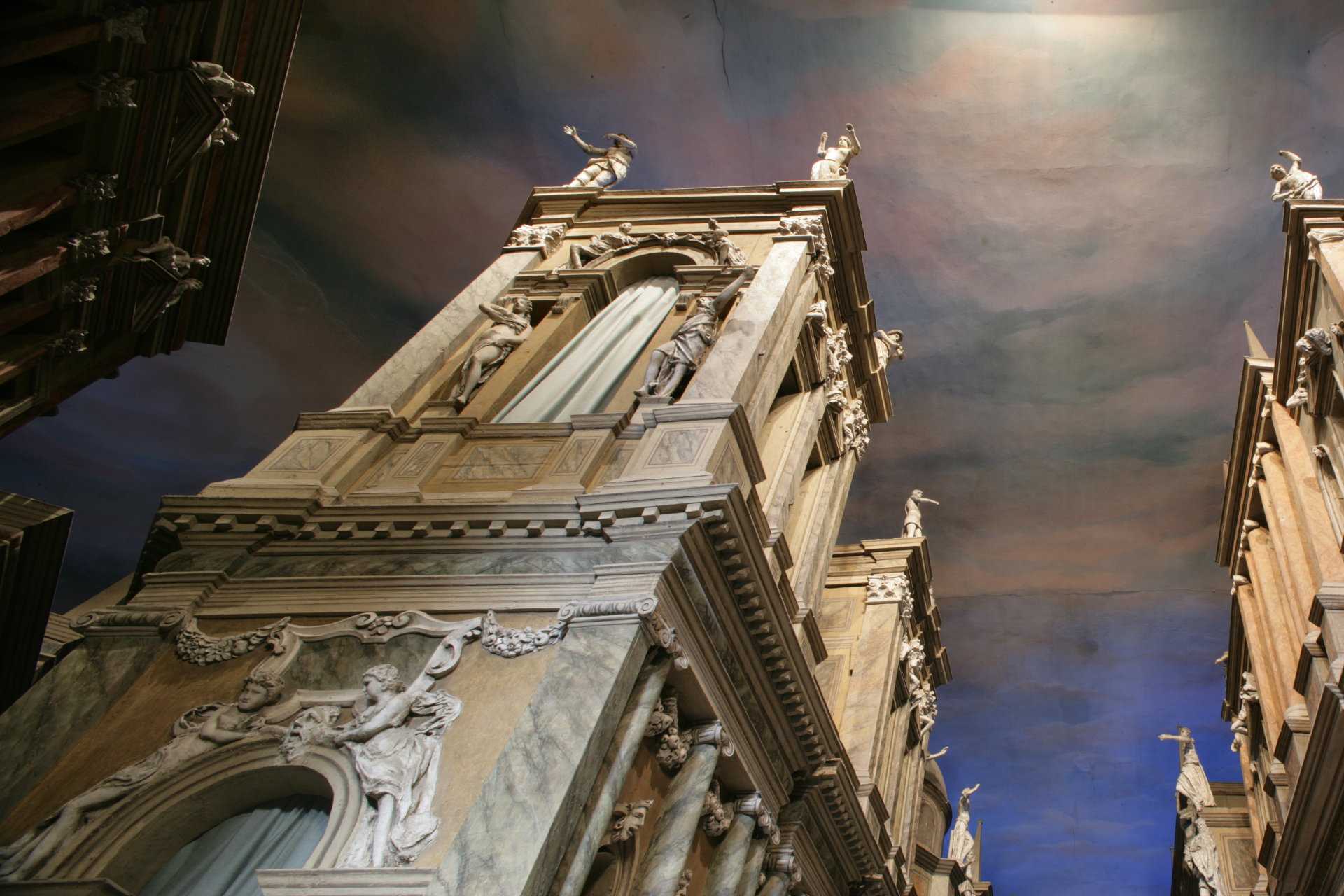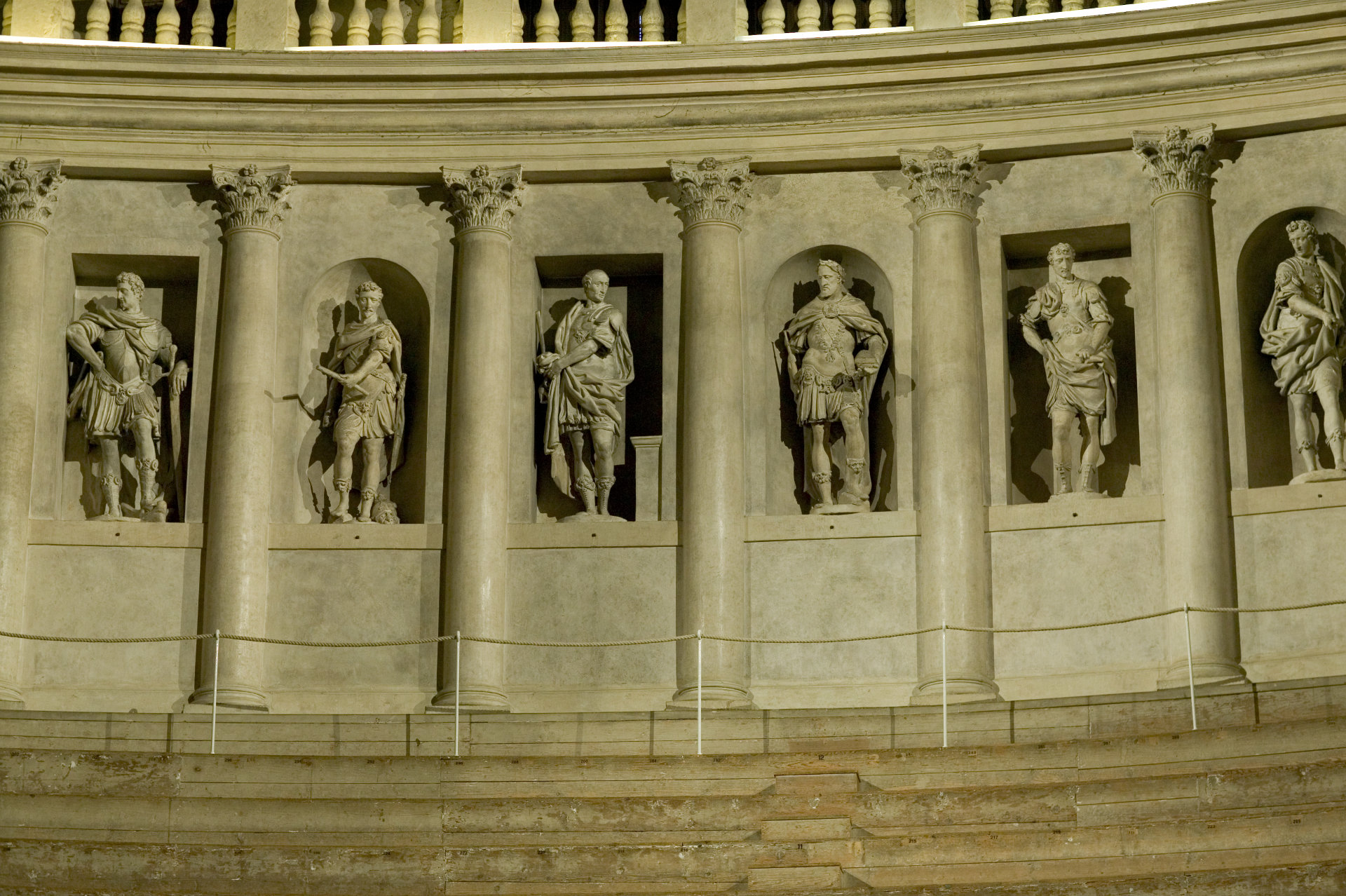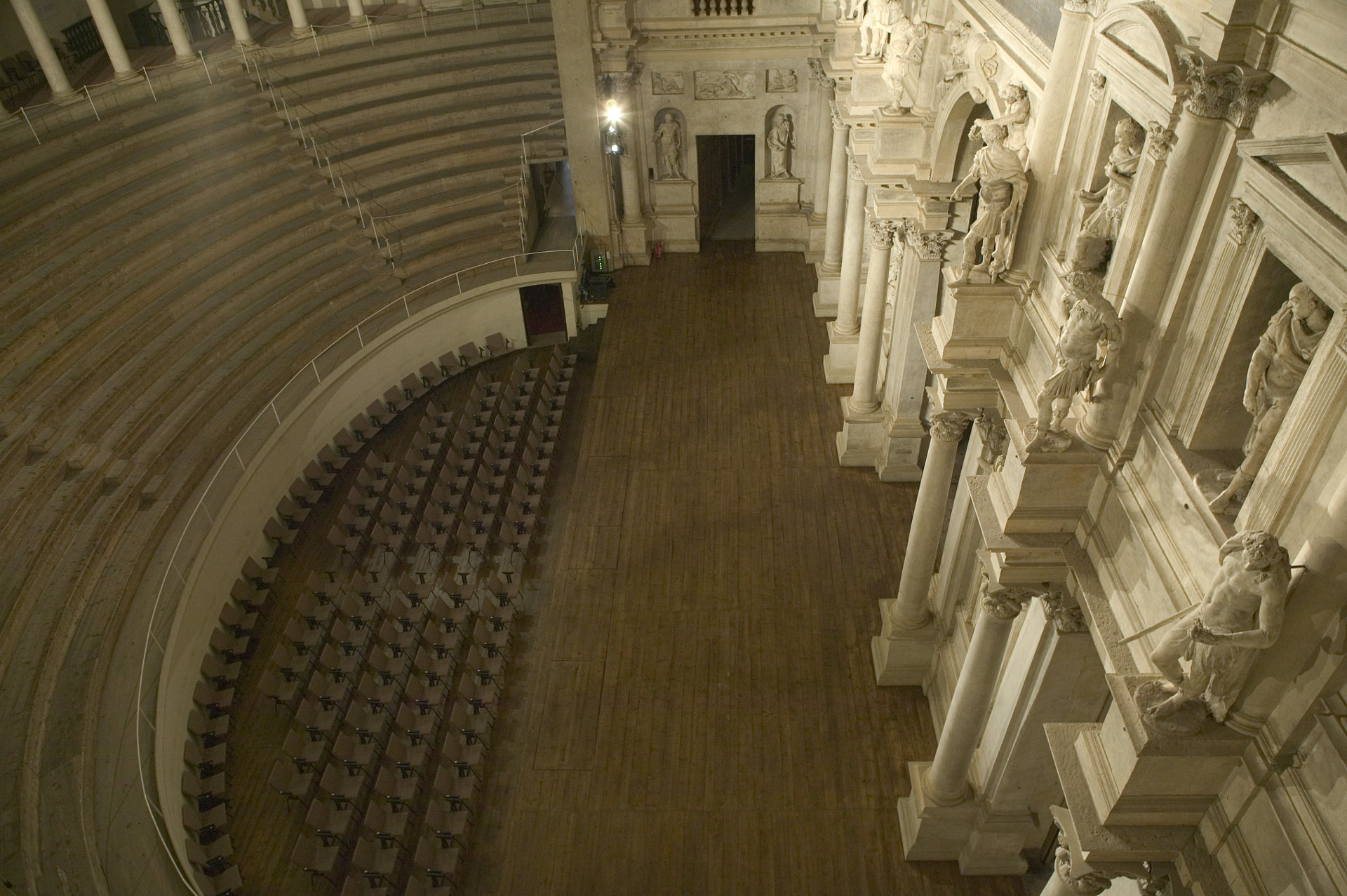History of the Theatre
Teatro Olimpico, the first permanent indoor theatre of the Italian Renaissance, whose original appearance is still miraculously preserved in its entirety, owes its construction to the Accademia Olimpica, a cultural institution of private noblemen who funded building of the theatre to plans by Andrea Palladio, between 1580 and 1585.
The Accademia Olimpica, still in existence and extensively active, was set up in 1555 by its twenty-one founding members, which included Palladio himself. It stood out at its debut not only for its cultural mission but also for its democratic, open social composition, which also numbered representatives from the world of professions and the arts. Alongside the exact and natural sciences, from the outset, the Olimpici declared their passionate interest in theatre, so much so that they decided to have a permanent theatre built for its performances. On 15 February 1580, they applied to the Magnifica Comunità di Vicenza, requesting premises suited to their purpose. Their request was met by the Consiglio dei Cento on 25 February. The designated area, formerly used as the town gaol, was within the walls of ancient San Pietro Castle, later known as the “Castello del Territorio”, a fort built in the thirteenth century in the eastern part of the city to control the nearby bridge over the Bacchiglione and the road to Padua.
Work on the new theatre was commissioned by the Olimpici to their academic peer Palladio, who at the time was seventy two years old and at the peak of his career and fame. He had already designed temporary stage scenery for shows and performances. The layout of the theatre, inspired by those in the classic world, is the result of forty years of reflection, starting with the architect’s first visit to Rome in 1541. Adaptation of the classic model to suit the limitations of the available area resulted in the absolutely original plans for the Olimpico, an “old-style” yet modern theatre, which fulfilled the humanistic aspiration to build a permanent theatre inspired by the great theatrical structures from ancient times, whose very capacity to adapt proclaimed its nature of genial invention.
The only drawing surviving from the planning stage of the theatre is a diagram preserved at the Royal Institute of British Architects in London.
Having commenced quickly, work was then halted less than six months later by the unexpected death of Palladio on 19 August 1580, turning this experience into a sort of cultural testament by the architect.
Without Palladio to supervise work on site, it was the solidity and orderly structure of the project itself that ensured the building remained essentially faithful to the original plans, despite modifications and inevitable adjustments made after his death.
On 3 March 1585, the first permanent theatre in modern history was officially inaugurated with a performance of Oedipus Tyrannus by Sophocles, an event that met with resounding success in the chronicles of that time.
In the seventeenth century, in addition to its original theatrical vocation as a stage for performances, the Olimpico also became a venue for ceremonies.
On 19 January 1813, the Accademia handed over running of the theatre to the Vicenza Municipal Administration, maintaining however the prerogative to continue to use it as the venue for its academic sessions and annual cycles of classic performances.
Passage freely taken from: Elisa Avagnina, Il Teatro Olimpico Vicenza, Marsilio, Venezia 2011

